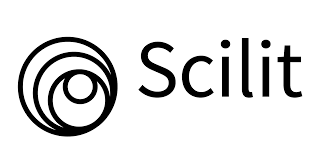Pelatihan Ekonomi Kreatif Pembuatan Wine Salak Nanas dan Rempah-Rempah Sebagai Peluang Usaha
DOI:
https://doi.org/10.38043/parta.v4i1.4231Keywords:
Training, Creative Economy, Wine, Pineapple, Snake Fruit, SpicesAbstract
The new economic era demands creativity that exceeds common expectations. Creative economy training such as processing pineapple, snake fruit and spices agricultural produce into wine is a breakthrough solution in increasing the economic value of a product. This insight is needed by generation Z who are leaning towards the creative economy era. The community service method covers two parts. The first is wine making training and the second is organoleptic testing of wine products. During the training process the participants were very enthusiastic in learning how to make snake fruit wine, pineapple and spices with being active in practicing and following each stage. The average results of the organoleptic test based on the level of preference for taste, aroma and color, the panelists liked the spiced wine the most by 4.73, 4.57 and 4.20 respectively. This activity was able to grow, motivate and add insight to participants in processing pineapples, snake fruit and spices into wine products as a business opportunity in the creative economy sector.
Downloads
References
Arta. K. B. D., & Dewi, L. G. K. (2021). Membantu meningkatkan penjualan produk umkm masyarakat di masa pandemi melalui bisnis online. Parta: Jurnal Pengabdian Kepada Masyarakat, 2(1), 61–65. https://doi.org/10.38043/parta.v2i1.3175.
Batiha, E-S. G., Alkazmi, L. M., Wasef, L. G., Beshbishy, A. M., Nadwa, E. H., & Rashwan, E. K. (2020). Syzygium aromaticum L. (Myrtaceae): Traditional uses, bioactive chemical constituents, pharmacological and toxicological activities. Biomolecules, 10(2), 202. https://doi.org/10.3390/biom10020202.
Bindon, K., Holt, H., Williamson, P. O., Varela, C., Herderich, M., & Francis, I. L. (2014). Relationships between harvest time and wine composition in Vitis vinifera L. cv. Cabernet Sauvignon 2. Wine sensory properties and consumer preference. Food Chemistry, 154, 90–101. https://doi.org/10.1016/j.foodchem.2013.12.099.
Brügger, B. P., Martínez, L. C., Plata-Rueda, A., Castro, B. M. de C. e., Soares, M. A., Wilcken, C. F., Carvalho, A. G., Serrão, J. E., & Zanuncio, J. C. (2019). Bioactivity of the Cymbopogon citratus (Poaceae) essential oil and its terpenoid constituents on the predatory bug, Podisus nigrispinus (Heteroptera: Pentatomidae). Scientific Reports, 9(1), 8358. https://doi.org/10.1038/s41598-019-44709-y.
Burzynska, J., Wang, Q. J., Spence, C., & Bastian, S. E. P. (2019). Taste the bass: Low frequencies increase the perception of body and aromatic intensity in red wine. Multisensory Research, 32(4–5), 429–454. https://doi.org/10.1163/22134808-20191406.
Criado, C., Muñoz-González, C., Mora, M., Fernández-Ruíz, V., Chaya, C., & Pozo-Bayón, M. A. (2022). Understanding if differences in salivary flow rate and total protein content triggered by biological factors (sex and age) affect aroma perception and the hedonic and emotional response of wine consumers. Foods, 11(19), 3104. https://doi.org/10.3390/foods11193104.
Dalengkade, M. N., Kalumata, R. B., Loklomin, R., Timbangnusa, W. Y., Amihi, S. M. M., Massa, V. M., Levara, A., Raraga, E. A., Boriki, D. F., Dumendehe, S., Rohaten, F. A., Kay, N., Puren, J. D., & Foro, R. C. A. (2022). Penerapan instalasi wetland sebagai pengolah limbah cair rumah tangga. BAKTI: Jurnal Pengabdian Kepada Masyarakat, 2(1), 43–52. https://doi.org/10.51135/baktivol2iss1pp43-52.
de Ancos, B., Sánchez-Moreno, C., & González-Aguilar, G. A. (2016). Pineapple composition and nutrition. In Handbook of Pineapple Technology (pp. 221–239). John Wiley & Sons, Ltd. https://doi.org/10.1002/9781118967355.ch12.
Dellacassa, E., Trenchs, O., Fariña, L., Debernardis, F., Perez, G., Boido, E., & Carrau, F. (2016). Pineapple ( Ananas comosus L. Merr.) wine production in Angola: Characterisation of volatile aroma compounds and yeast native flora. International Journal of Food Microbiology, 241, 161–167. https://doi.org/10.1016/j.ijfoodmicro.2016.10.014.
Farias, A. P. P., Monteiro, O. dos S., da Silva, J. K. R., Figueiredo, P. L. B., Rodrigues, A. A. C., Monteiro, I. N., & Maia, J. G. S. (2020). Chemical composition and biological activities of two chemotype-oils from Cinnamomum verum J. Presl growing in North Brazil. Journal of Food Science and Technology, 57(9), 3176–3183. https://doi.org/10.1007/s13197-020-04288-7.
Girsang, E., Lister, I. N. E., Ginting, C. N., Khu, A., Samin, B., Widowati, W., Wibowo, S., & Rizal, R. (2019). Chemical constituents of snake fruit (Salacca zalacca (gaert.) Voss) peel and in silico anti-aging analysis. Molecular and Cellular Biomedical Sciences, 3(2), 122. https://doi.org/10.21705/mcbs.v3i2.80.
Howkins, J. (2013). The Creative Economy: How People Make Money From Ideas. Penguin Books Ltd.
Idise. (2012). Studies of wine produced from pineapple (Ananas comosus). International Journal for Biotechnology and Molecular Biology Research, 3(1), 1–7. https://doi.org/10.5897/IJBMBR11.034.
Indrawati, U. S. Y. V., & Hazriani, R. (2020). Aneka produk olahan buah nenas sebagai alternatif peningkatan nilai tambah produk di desa Galang, Kabupaten Mempawah. Jurnal Dinamika Pengabdian (JDP), 6(1), 150–157. https://doi.org/10.20956/jdp.v6i1.11520.
Kiani, H. S., Ali, A., Zahra, S., Hassan, Z. U., Kubra, K. T., Azam, M., & Zahid, H. F. (2022). Phytochemical composition and pharmacological potential of lemongrass (cymbopogon) and impact on gut microbiota. AppliedChem, 2(4), 229–246. https://doi.org/10.3390/appliedchem2040016.
Moulai-Hacene, F., Boufadi, M. Y., Keddari, S., & Homrani, A. (2020). Chemical composition and antimicrobial properties of elettaria cardamomum extract. Pharmacognosy Journal, 12(5), 1058–1063. https://doi.org/10.5530/pj.2020.12.149.
Roda, A., Lucini, L., Torchio, F., Dordoni, R., De Faveri, D. M., & Lambri, M. (2017). Metabolite profiling and volatiles of pineapple wine and vinegar obtained from pineapple waste. Food Chemistry, 229, 734–742. https://doi.org/10.1016/j.foodchem.2017.02.111.
Shalaby, E. A., Shanab, S. M. M., Hafez, R. M., & El-Ansary, A. E. (2023). Chemical constituents and biological activities of different extracts from ginger plant (Zingiber officinale). Chemical and Biological Technologies in Agriculture, 10(1), 14. https://doi.org/10.1186/s40538-023-00385-9.
Suardani, N. G. A., & Pancane, I. W. D. (2021). Meningkatkan ekonomi masyarakat br. Timbul melalui usaha kerajinan tangan kreatif dari beragam bahan kayu di masa pandemi covid-19. Parta: Jurnal Pengabdian Kepada Masyarakat, 2(1), 21–28. https://doi.org/10.38043/parta.v2i1.2576.
Suica-Bunghez, I. R., Teodorescu, S., Dulama, I. D., Voinea, O. C., Imionescu, S., & Ion, R. M. (2016). Antioxidant activity and phytochemical compounds of snake fruit (Salacca Zalacca). IOP Conference Series: Materials Science and Engineering, 133(1), 012051. https://doi.org/10.1088/1757-899X/133/1/012051.
Syamsunarno, M. R. A., Safitri, R., & Kamisah, Y. (2021). Protective effects of Caesalpinia sappan linn. and its bioactive compounds on cardiovascular organs. Frontiers in Pharmacology, 12(September), 1–14. https://doi.org/10.3389/fphar.2021.725745.
Torrico, D. D., Han, Y., Sharma, C., Fuentes, S., Gonzalez Viejo, C., & Dunshea, F. R. (2020). Effects of context and virtual reality environments on the wine tasting experience, acceptability, and emotional responses of consumers. Foods, 9(2), 191. https://doi.org/10.3390/foods9020191.
UNCTAD (United Nations Conference on Trade and Development). (2008). Creative Economy Report 2008. The Challenge of Assessing the Creative Economy: towards Informed Policy-making. In Harvard Business Review. UNCTAD. http://www.unctad.org/creative-economy and http://ssc.undp.org/creative_economy.
Wiratnaya, I. N., Rinala, I. N., & Darmawan, I. W. A. (2019). Karakteristik wine salak yang di produksi di Kabupaten Karangasem dan Kabupaten Tabanan. Gastronomi, 7(1), 12–26. https://ejournal.ppb.ac.id/index.php/jgi/article/download/385/323.
Downloads
Published
How to Cite
Issue
Section
License
Copyright (c) 2023 Mario Nikolaus Dalengkade, Bayu Achil Sadjab, Dwi Rahayu Pujiastuti, Kurnia, Nining Purwaningsih

This work is licensed under a Creative Commons Attribution-ShareAlike 4.0 International License.















